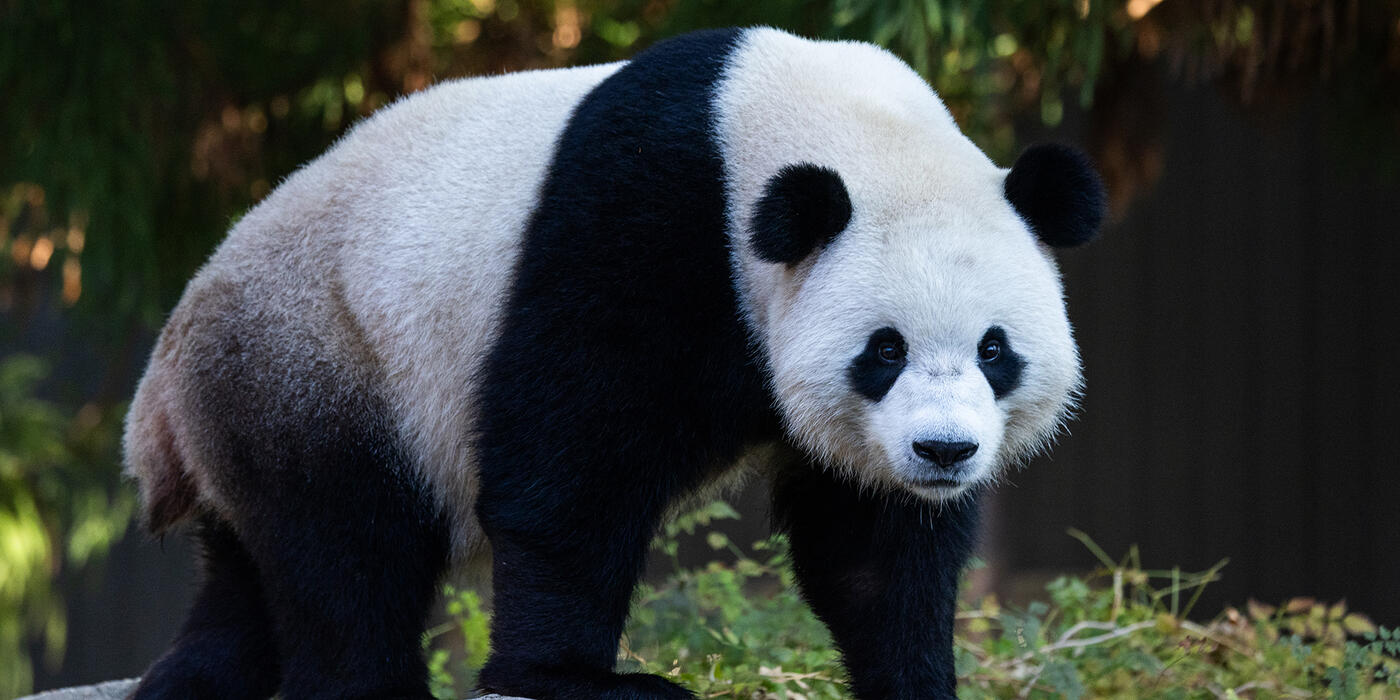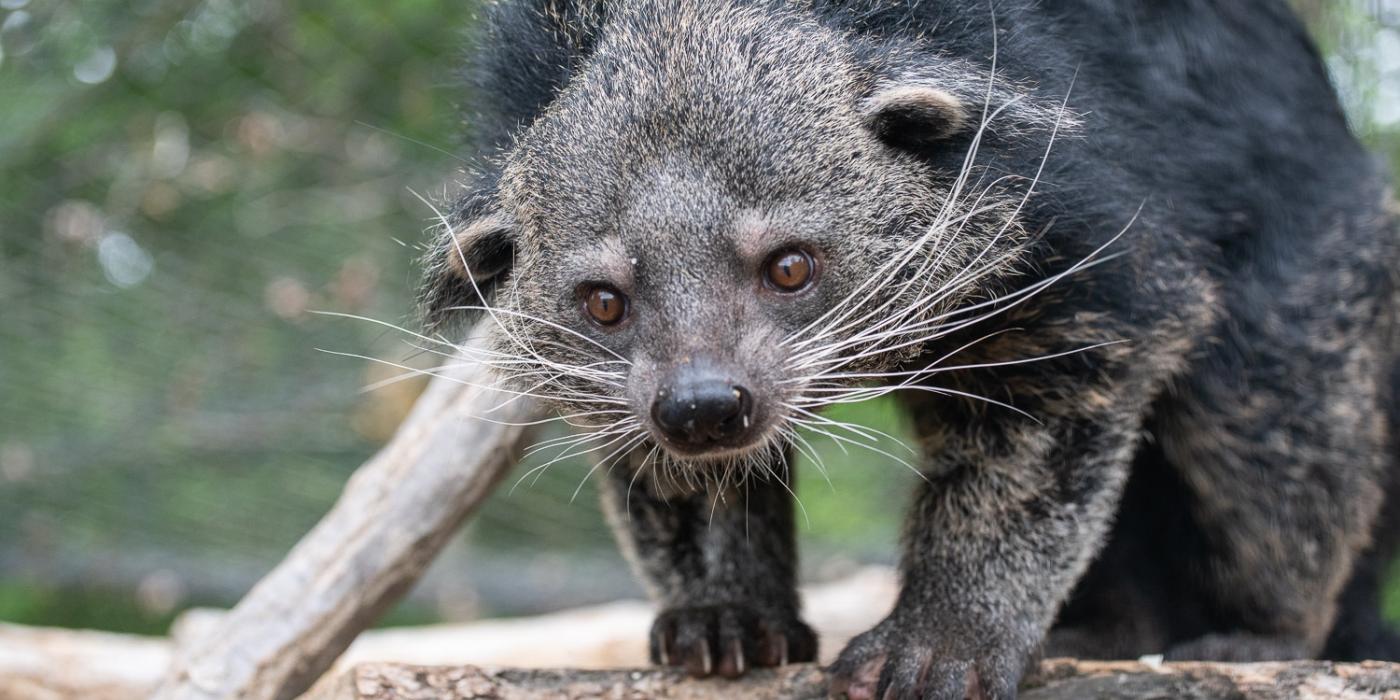How Keepers at Smithsonian's National Zoo Help Giant Pandas Feel at Home

A few weeks after rolling out the black-and-white carpet for the new pair of high-profile residents, staff at the Smithsonian’s National Zoo are helping giant pandas Bao Li and Qing Bao settle into their new home at the Asia Trail exhibit.
When she first met Qing Bao, Asia Trail keeper Mariel Lally wondered if the giant panda might be a handful.
“We tried calling her over, but she didn’t come. She just sat outside in her tree all day and didn’t want to bother with us,” said Lally, who has worked with the bears 8 years at the Smithsonian’s National Zoo and Conservation Biology Institute. Lally’s first meeting with the 3-year-old female panda took place in October 2024 at the giant panda conservation center in Dujiangyan, Sichuan, where a Smithsonian delegation had gathered to prepare the pandas for their move to Washington, D.C. later that month.
A month later, Lally’s relationship with Qing Bao is on firmer ground. “She’s still a little on the independent side, so I may have to call her a few times before she decides to listen,” she laughed.
What’s the secret to befriending a giant panda? If you ask keepers like Lally, connecting a well-tested, science-based process used at zoos and wildlife centers around the world to the Smithsonian Institution’s expertise in giant panda conservation is the key.

Giant panda Qing Bao investigates a tree in her habitat at the Zoo’s Asia Trail. Keepers take introductions at a slow pace so the animals feel comfortable.
Keepers are crucial
It takes a village to make a panda feel at home. While veterinarians and nutritionists focus on the physical side of a pandas’ overall health, the goal for the animal keepers is to make sure the pandas are feeling safe and confident in their new habitat.
Before Qing Bao and Bao Li make their official public debut at Asia Trail in January 2025, staff are building this confidence by gradually introducing the 3-year-old pandas to habitat areas, daily routines, and other parts of their life at the Zoo.
Keepers like Lally are often in the best position to acclimatize new animals. As providers of daily care, “we’re the people the pandas see most often, so we want to ensure they feel safe around us and trust us. This is ultimately what helps us take care of them in the most stress-free way possible.”
On a crisp October morning, giant pandas Qing Bao and Bao Li explore their outdoor habitat areas.
Watching for behavioral cues
Watching pandas eat bamboo, climb trees and take naps all day might sound like a dream job—just ask the millions of online visitors who have tuned in to watch the Zoo’s Giant Panda Cam over the years— but careful observation is necessary for maintaining the animals’ welfare, Lally explained.
While on-site biologists keep close tabs on Qing Bao and Bao Li’s growth and development—and occasionally poke through a few stool samples—Lally and the keeper team make records of the pandas’ behavior. Any signs of stress or discomfort from the pandas are noted and addressed, Lally explained.
Meanwhile, the team slowly and carefully introduces activities designed to encourage the pandas to interact with their environment, watching for signs the animals are playful and content.
“We want to see the pandas eating, playing, sleeping, and exploring their exhibit. We want to see parts of their personalities coming out. We want to see them feel safe and confident in their new spaces,” she said.
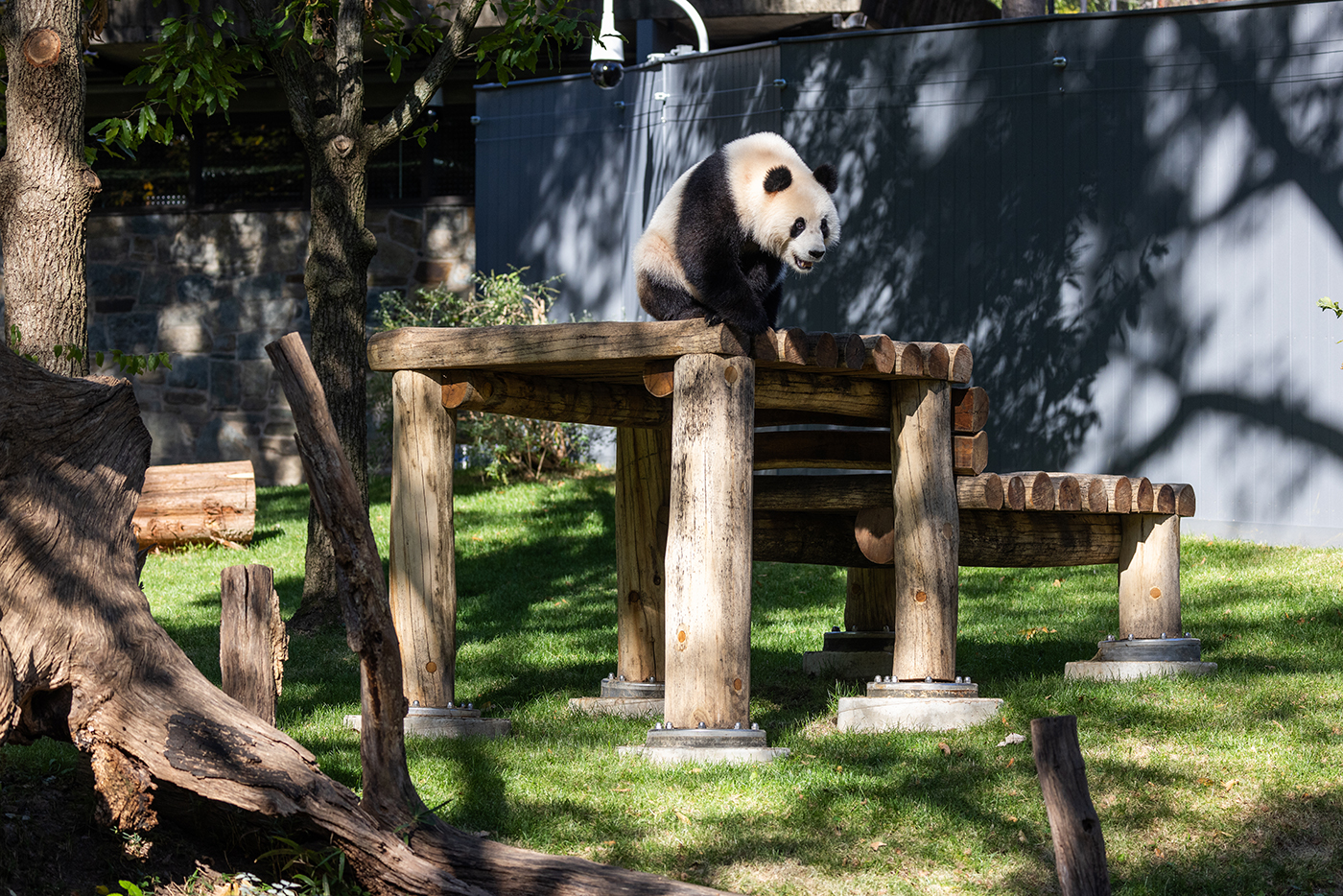
Giant panda Qing Bao rests on a platform in her outdoor habitat. Climbing structures, rope toys, water pools, and even satchels of spices can help a giant panda feel like their environment is a safe and interesting place to explore.
Lally emphasized that while giant pandas generally behave in similar ways, keepers have to account for the bears’ big personalities—and what holds true for one panda may not for the other. For example, where Qing Bao will often approach new enrichment in a patient and reserved manner, Bao Li’s outgoing and energetic personality means he’s more likely to dive right in, she said.
The Asia Trail keeper team recently provided each bear with a big pile of ice shavings, standing in for the snowdrifts found in a giant panda’s natural mountain habitat.
“Qing Bao didn’t care about it, but Bao Li loved it. He stomped on it, rolled around in it, and pushed his ball over to it. Everything is new to him, so he’s having a lot of fun right now,” she said.
Training builds trust

Giant panda Bao Li perches on an outdoor climbing structure made of wood and durable fire hose. Staff renovated the indoor and outdoor panda habitats ahead of the bears’ arrival on October 15.
The relationships the keepers build, and the understanding they gain, are critical for delivering care with greater control and consistency—important for any animal, especially large ones like bears.
If you were to ask a 200 pound carnivore to voluntarily perform a basic action in a medical procedure—like presenting a paw for a routine blood draw, for example—you would probably not have much luck. But if you were to practice with that animal over several months while making clear the connection between participating and receiving a treat or preferred toy, your odds of success would be a lot higher.
In the zoo world, this technique is called positive reinforcement. Animal care experts like Lally use this form of operant conditioning to encourage participation in crucial tasks an animal might not otherwise be interested in, without having to rely on sedation or restraining devices.
The Asia Trail team is still in the early stages of this process with Qing Bao and Bao Li. While giant pandas he can choose not to participate, providing the animals with lots of praise and encouragement means they usually do, said Lally.
“Like many young pandas, Qing Bao and Bao Li two are very food-motivated, which means they’re very excited to work with us,” explained Lally.
And the most coveted participation prize? Carrots, she said.
“Apples are a close second.”
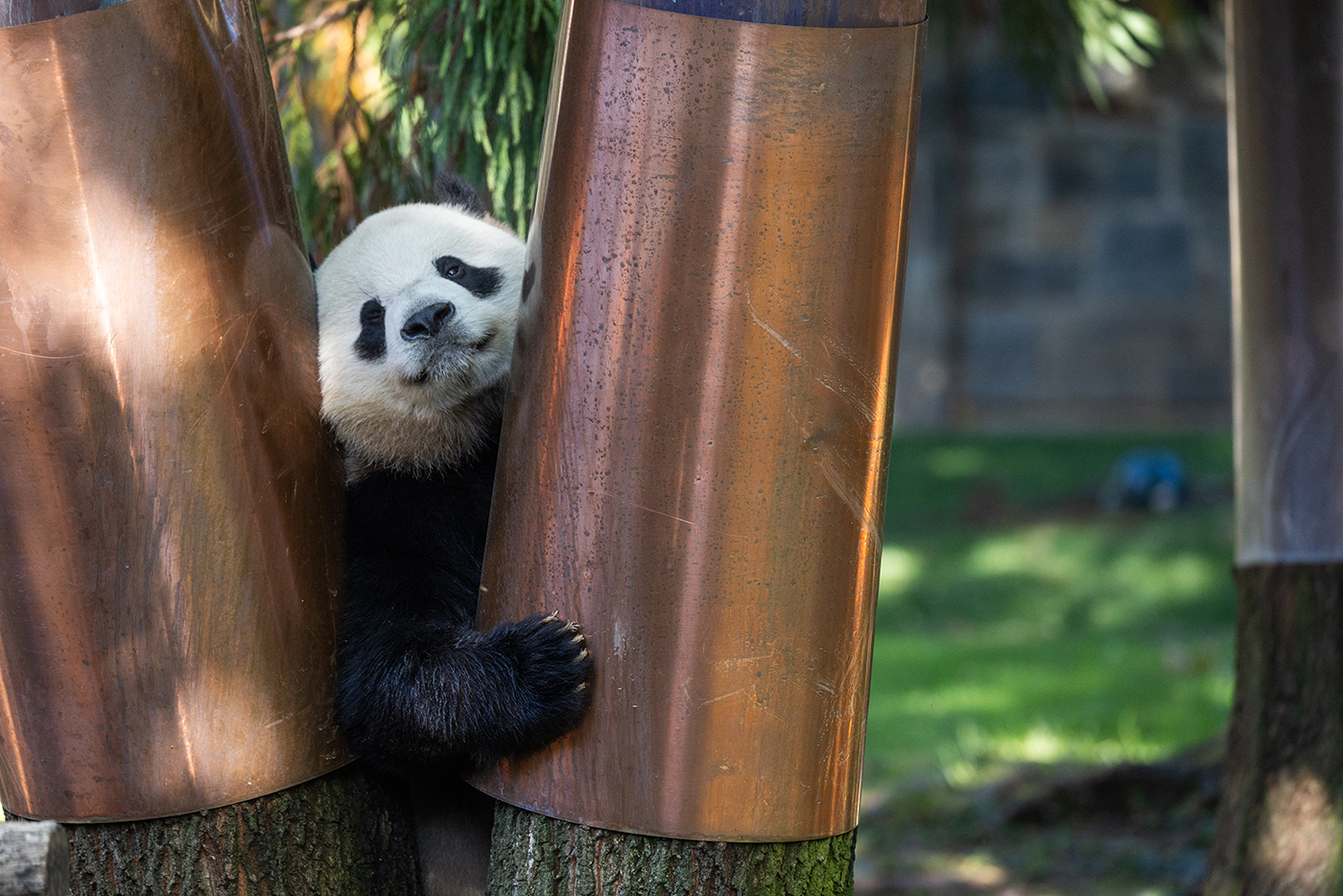
Giant panda Bao Li wedges himself in between two trees. A metal wrap protects the tree bark from curious paws.
Just a few weeks after Qing Bao and Bao Li’s arrival, Lally and the team host several panda training sessions each day.
Eventually the pandas will be trained to take part in a range of actions associated with their overall well-being, like standing still on a scale while veterinary teams check their weight, or seamlessly shifting between indoor and outdoor areas when keepers need to clean part of their habitat. Some of these behaviors might take months or even years to perfect, but with a steady supply of patience and encouragement, Lally is confident the pandas will succeed.
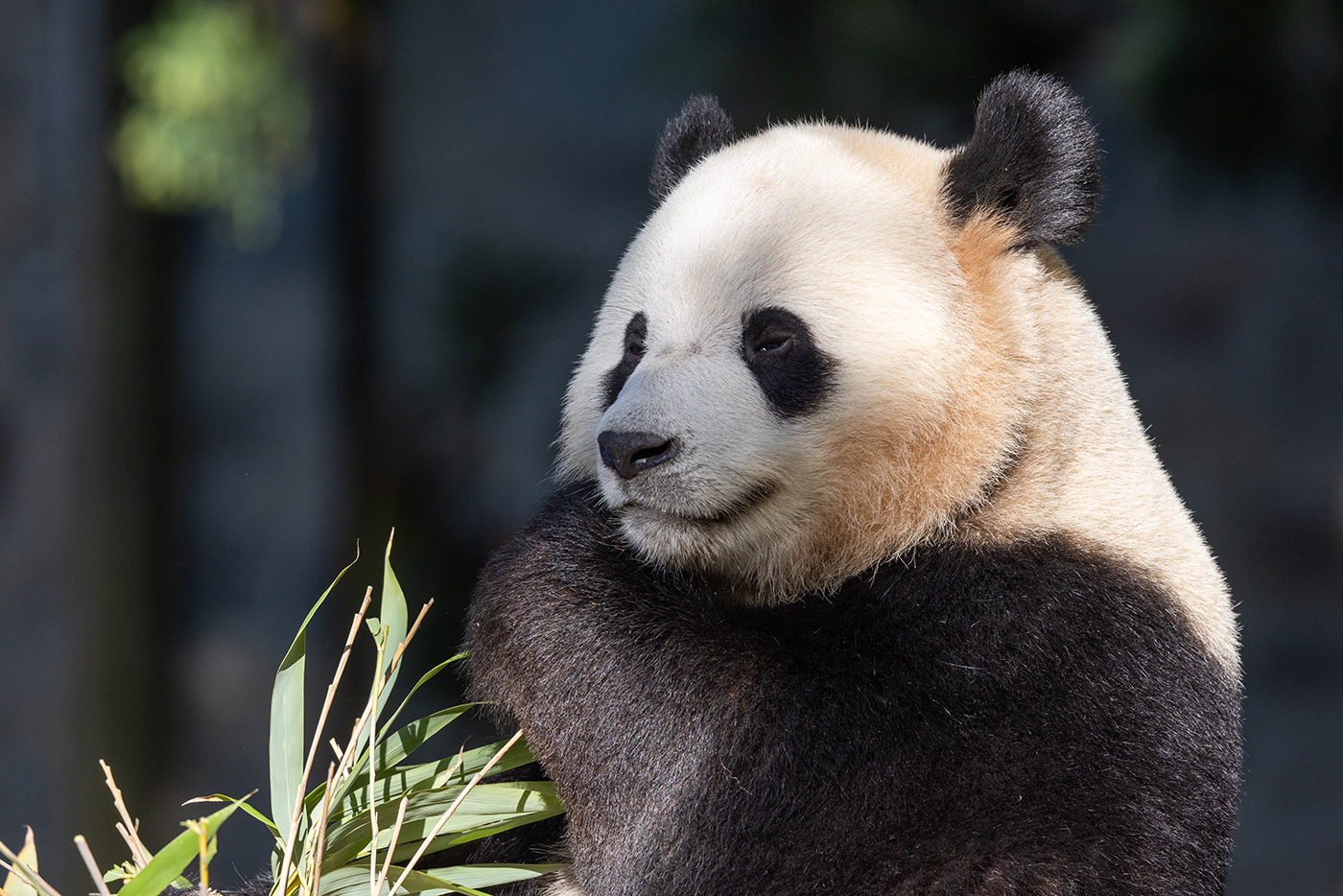
Giant panda Bao Li eats a stalk of bamboo. Adult pandas eat between 26-84 pounds of bamboo each day, or about 90% of their regular diet.
Preparing for a giant debut
When the giant panda exhibit reopens in January 2025, Qing Bao and Bao Li will greet visitors from around the world as ambassadors to their species at the Zoo, serving as living representatives of the Smithsonian’s cooperative giant panda breeding program while connecting guests with conservation efforts to protect wild pandas in their native habitat.
By then, the keeper team will have applied what they learned during the acclimation period to make the Asia Trail a great place to spend time—and not just for the pandas, said Lally.
“When people come to the Zoo, they’re going to see the pandas eating bamboo, playing, and having a lot of fun... We’re doing everything we can to make this a rewarding experience not just for the pandas, but for the visitors, too.”
Hungry for more giant panda updates? Tune into Prepping for Pandas, a digital series that takes you behind-the-scenes as Smithsonian's National Zoo experts care for these beloved animal ambassadors.
Related Species:

